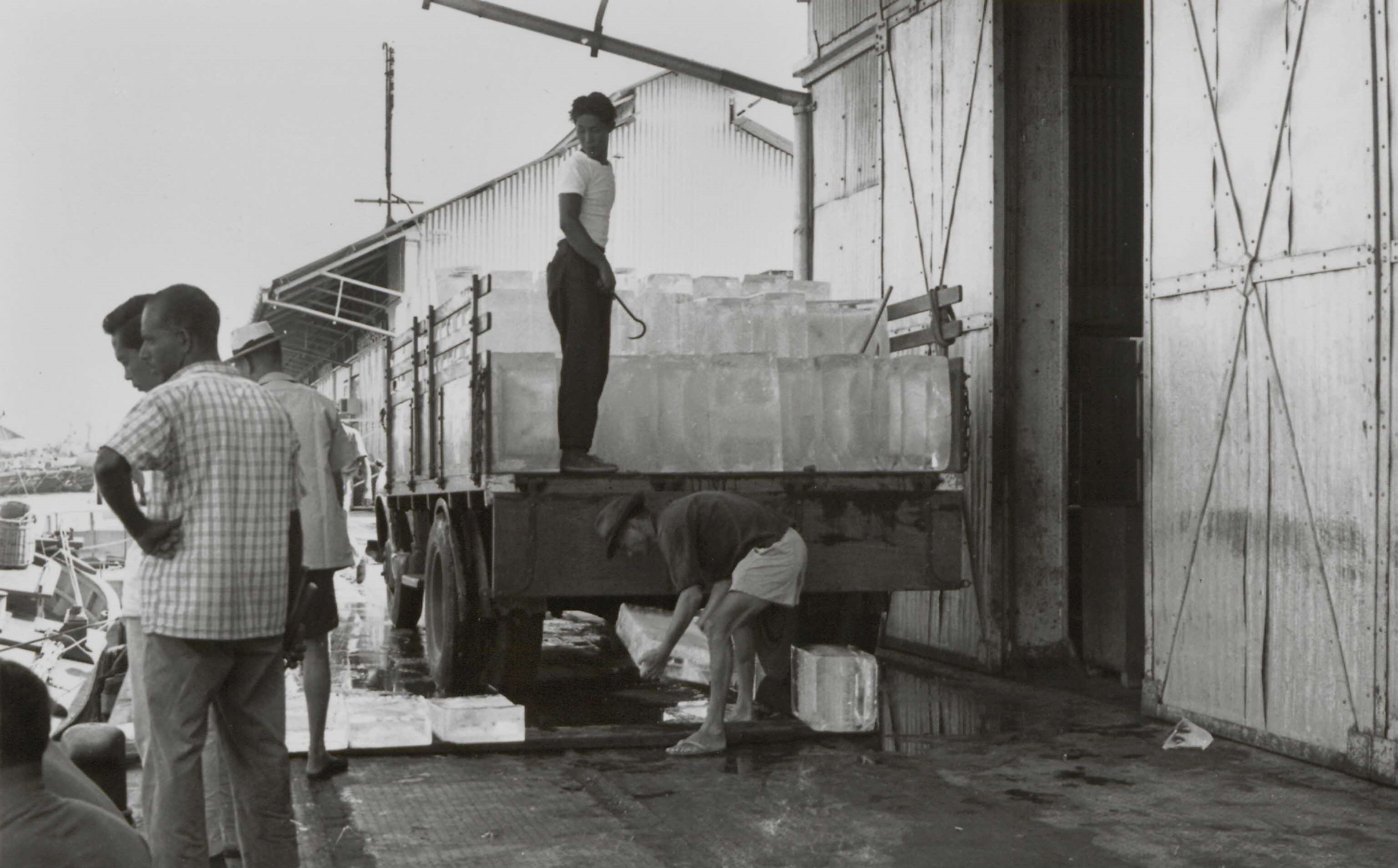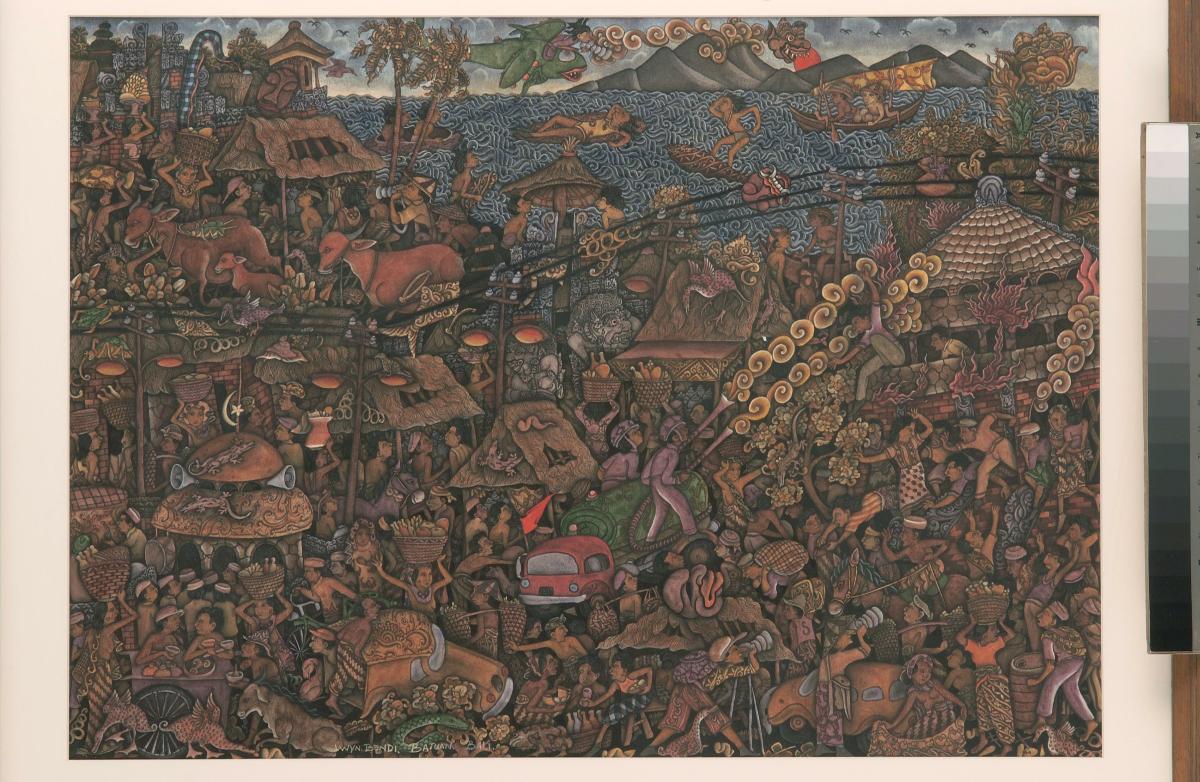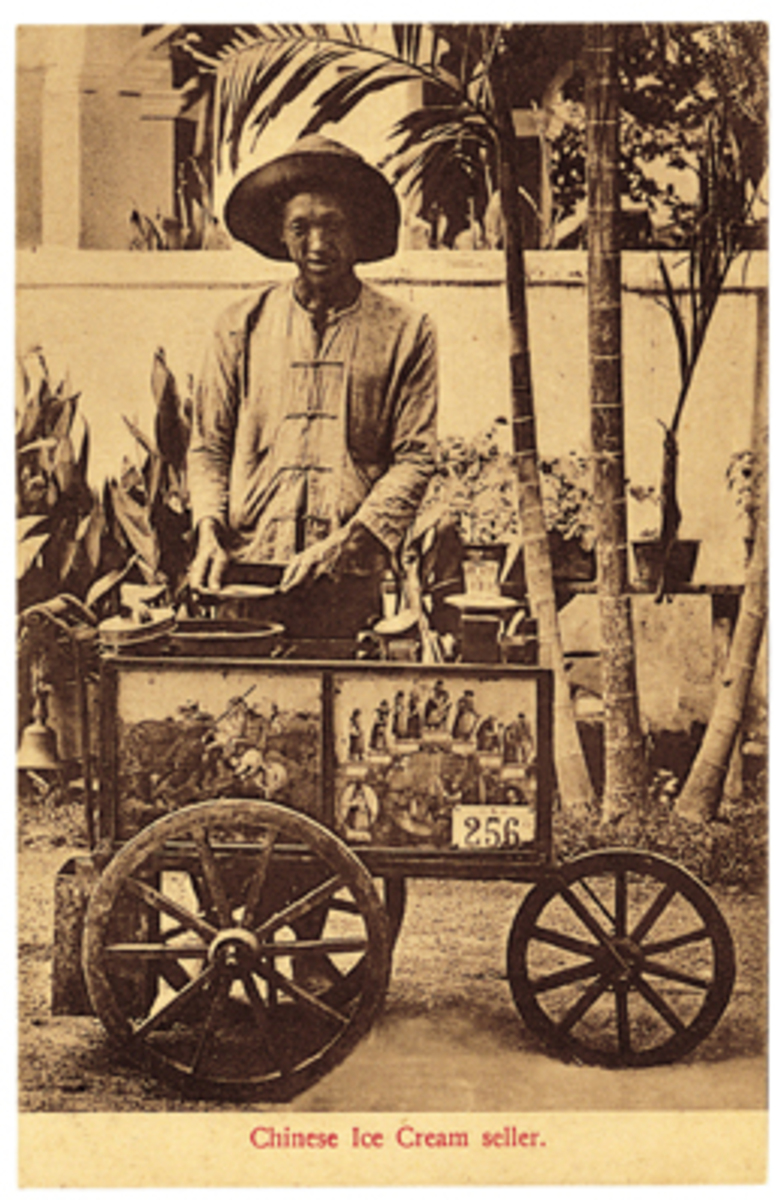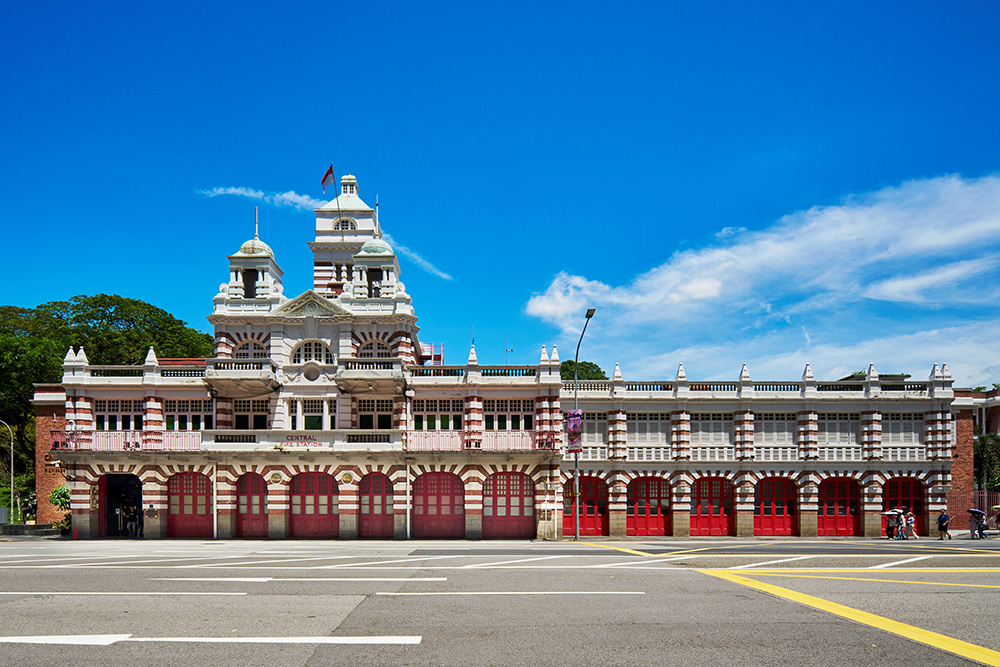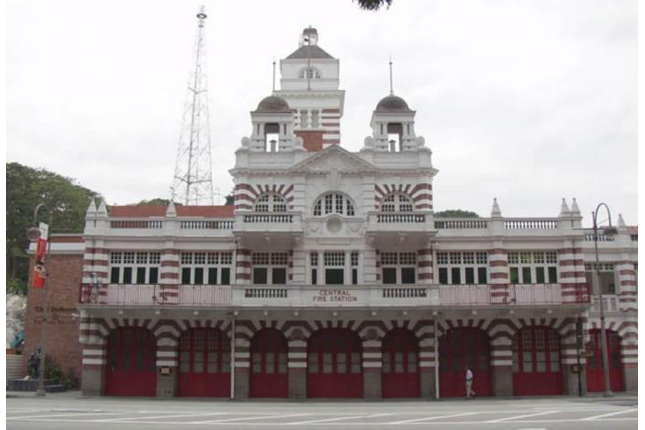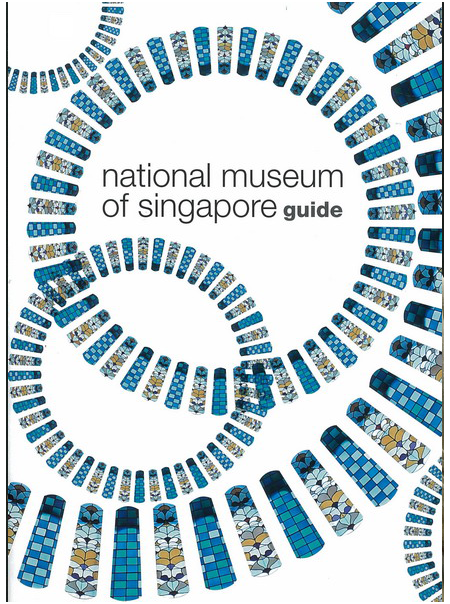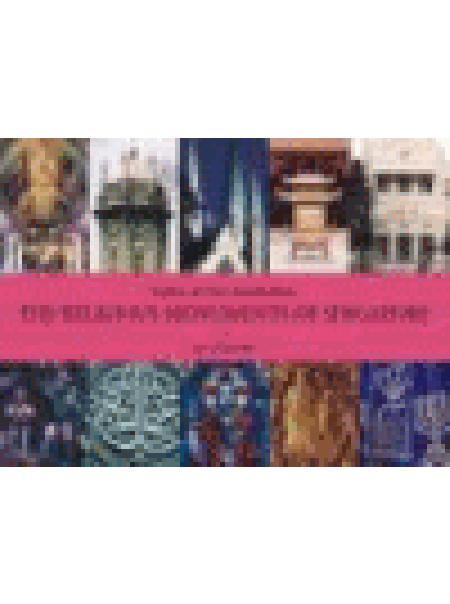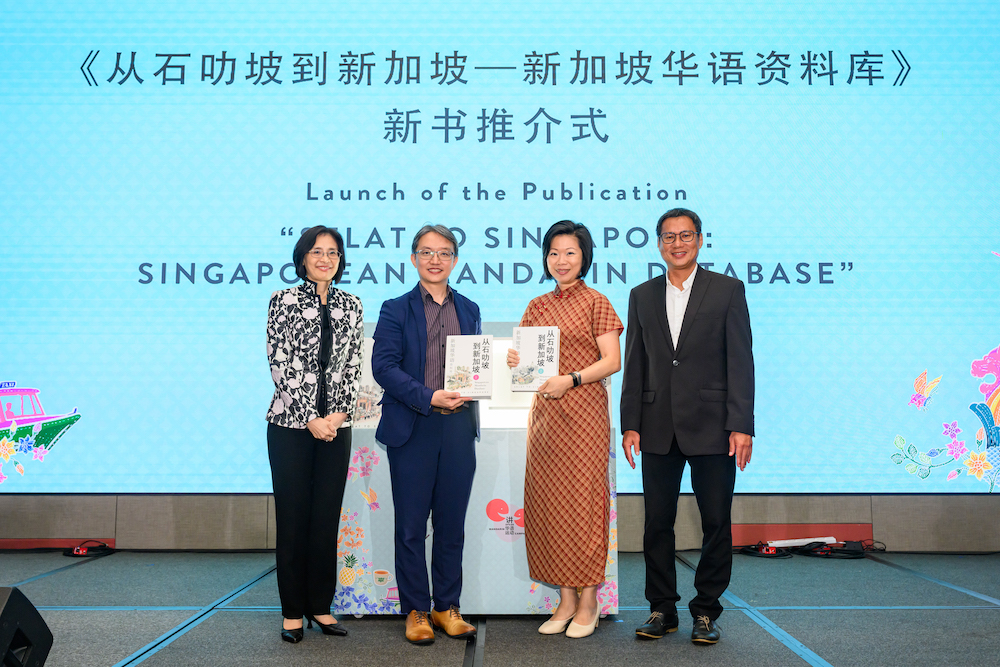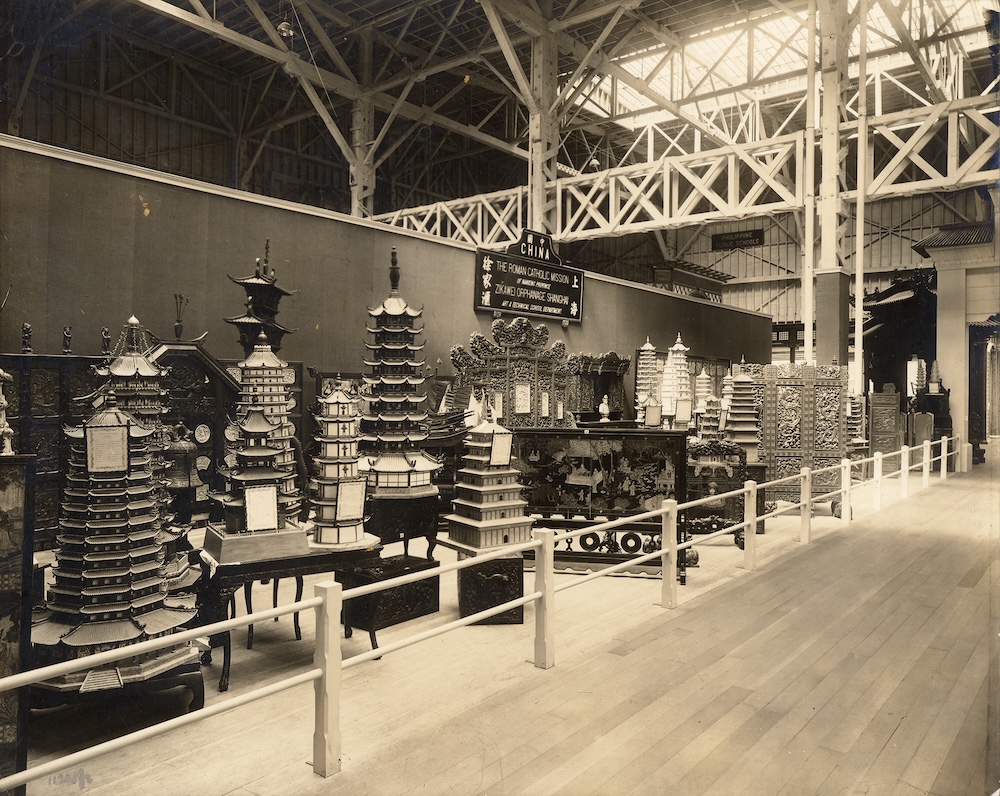TL;DR
What were the circumstances that shaped our eating habits and taste preferences in the 20th century? We trace the rise in popularity of laksa, ice kachang and Milo in Singapore’s food culture.

Text by Dr Geoffrey K. Pakiam, Fellow, Temasek History Research Centre, ISEAS-Yusof Ishak Institute
Read the full MUSE SG Jan 2023 Issue
Image above: Ice blocks for keeping fish fresh being loaded onto lorries, 1960s. Primary Production Department Collection, courtesy of National Archives of Singapore.
Although Singapore’s known past goes back to the late 1200s, it is arguably the 20th century that stands out as the most significant in the history of its food culture.1 Many, if not most, of Singapore’s old cuisines declined or vanished during this period.2
But why have some dishes survived and grown into icons today? And why have others, once obscure, become ubiquitous? There are no definitive answers to these complex questions. Much depends on the nature of the food item in question, and its social and historical context.
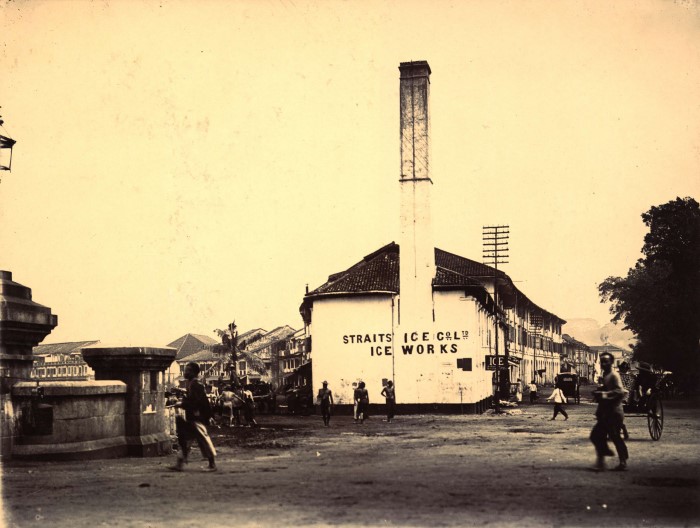
The Advent of Artificial Refrigeration
What we eat and cook is deeply influenced by the technologies available to us. Often what comes to mind first is the use of the stove and the application of fire and heat in one form or another. While the shift from wood and charcoal-based fuels to stoves using electricity and natural gas was an important factor driving culinary change in Singapore during the 20th century, it was access to ice, rather than fire, that was probably more critical in shifting the playing field. Artificial refrigeration had an outsized impact on how food in a tropical environment like Singapore was produced, transported, stored and even conceived. In less than a century, refrigeration made it possible for an unprecedented range of food items to be consumed by an increasingly broad swathe of Singapore’s population.
Singapore was home to a permanent ice manufacturing presence as early as 1861. Early players included Singapore Ice Works, Pioneer Steam Works and Straits Ice Company. Some wealthy households also had small-scale ice-making machines. Ice was initially used for medicinal purposes, chilling drinks and desserts consumed by the well-to-do, and, most significantly, to preserve fish caught and transported to Singapore from distant waters. Portable and relatively cheap, locally made ice in Singapore was the main form of refrigeration in markets, retail spaces and homes before the 1960s.
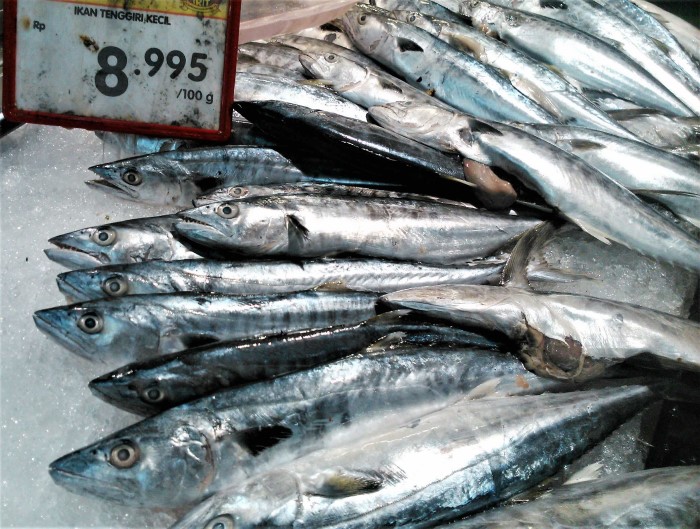
By the mid-1930s, Singapore was producing an estimated 300–600 tons of ice daily. Much of this ice was channelled into the expanding Singapore-based fishing industry. A 1948 survey of Singapore’s ice industry found that roughly half of all ice produced was used to chill freshly caught fish, with the remainder purchased by retailers for food preservation, the chilling of drinks and ice-cream manufacture.3
As in the rest of the region, only subsistence fishermen and the richest strata of society could afford to eat a wide variety of seafood, served as fresh as possible. An 1895 report asserted that only Europeans and wealthier Asians in Singapore could enjoy fresh meat or fish on their tables twice a day, including Spanish mackerel (tenggiri), pomfret (bawal), mullet (jempul) or some other similarly tasty fish found in local markets. In contrast, Singapore’s urban working classes were believed to eat two meals a day, mostly comprising boiled rice and a “small morsel of dried fish”.4
It was only after the Second World War, as the proportion of Singapore’s salaried middle-class Asian residents grew, that more households could enjoy fresh seafood as well as pork, chicken, beef or mutton. Dried, salted fish correspondingly became less of a low-cost protein staple for the masses and was used more as a condiment.
The growth of the fishing industry and its demand for ice had knock-on effects in other culinary areas. Iced confections were already being sold in Singapore by the 1880s, though primarily for the affluent. By the 1920s, however, the greater affordability and accessibility of ice meant that local desserts such as ice kachang (see page 40) were becoming more widely consumed.
The Rise of Culinary Nationalism
As cuisines began to be perceived as familiar to residents in a given territory, and even eaten by many of them on occasion, the notion that certain dishes were more representative of a common territorial identity began to take hold.6 The development of popular food culture thus added texture to the tentative, messy nature of early nationalism in Singapore.
Perhaps because it was already seen as a staple food consumed by Asians of all economic classes in Singapore by the beginning of the 20th century, laksa became a particularly potent dish for expressing a Malayan-Singaporean identity. At a lecture on how local Straits Asians could maintain and even improve their social status in the 1920s, Lim Boon Keng, a prominent member of the community, highlighted the importance for young Singaporeans to understand the cultural environment they had been raised in:
The next problem you have to think of is the influence of our entire environment, that is, the social life in Singapore. The social life in Singapore is a complete mixture. In Scotland, you say, Scotch broth; in Singapore, the nearest thing is Laksa—everything mixed up. And if you are a student of psychology or sociology or humanity it will take you many years really to study the effects of Malaya, of all the customs, bad habits and good habits.7
Laksa became a staple menu item at pre-independence fundraising events in Singapore, including efforts to provide relief for the unemployed in the 1930s. When Japan went to war with China in 1937, homemade laksa even became a means through which local Chinese upper and middle classes expressed solidarity against Japanese imperialism:
Shocked by harrowing stories of human suffering caused by ruthless bombarding of their countrymen… by tales of hungry, crying children robbed of their parents and left to perish, the Chinese women of Singapore have hit on a novel way of raising funds for the upkeep of these destitute war orphans. Their enterprise consists of a café at the Great World…where delicious Chinese and local dishes may be obtained every Saturday night. This food is all homemade and is contributed… by members of the China Relief Fund Committee (Woman’s Section) who also take it in turns to serve behind the counter…Local dishes, such as Laksa and [Popiah] are sometimes served while even delicacies like sharks fin, bird’s nest and cooked rice wrapped up in lotus leaves are obtainable here if sufficient orders are received.8
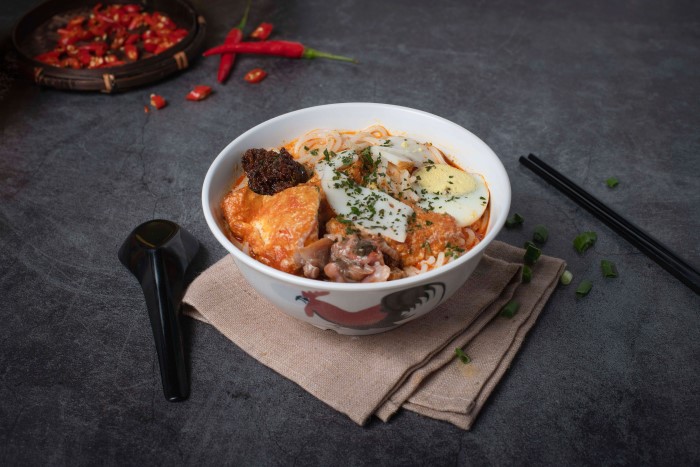
The irony of serving a ‘local’ dishlike laksa to support a ‘Chinese’ cause gave way to further social transformations. After the end of the Japanese Occupation in 1945, growing numbers of young Malayans went abroad for their university education; in the process, they inadvertently learned more about what it meant to be ‘Malayan’, not least through food:
Today’s [Malayan] students [in London] queue for the bus, share ‘digs’, swot hard for the examinations, buy a cheap seat at the cinema and occasionally cook their own meals…A great deal of ingenuity is practised by students in ‘digs’ in cooking their own Malayan food. There is the Chinese student who claims that he has found the best available ingredients for cooking kai cheok (chicken broth)— Bachelor’s chicken noodle, dehydrated chicken and rice. Laksa is produced by another out of vermicelli, roti babi out of bread, eggs, mackerel and tamarind and minced beef, onions and garlic.9
Long before Singapore’s independence in 1965, food fights were already brewing between proponents from either side of the Causeway about which version of Malayan laksa was superior, provoked by remarks made by well-meaning Western outsiders:
America’s food expert, Mr. C. A. Rietz, thinks Singapore’s food is ‘wonderful’ but up-country folks and even many Singaporeans maintain that the home of good Malayan food is Penang…Mr Jimmy Tan, an airline clerk: ‘Although a Singaporean, I have to give the credit to Penang for food. She has Siamese laksa of the sweet and sour type, Chee Yok Chok (pork broth), and delicious Hockien Mee… Singapore perhaps can only boast of its Chicken Rice.’10
Urbanisation and Hygiene Challenges
The unfolding of Singaporean nationalism was also tied to basic questions of development and economic growth—in essence, what modernisation in Singapore was largely about during the 20th century. Much of Singapore’s old infrastructure did not mesh well with the growth of mass industrialisation andan expanding population, which in turn led to rapid urban development. Urban renewal had a mixed impact on local food culture as a food reviewer recounted:
I remember Hong Chew Kee [stall] from old People’s Park… After the famous fire and resettlement, business deteriorated… Dish by dish the traditional desserts went. Up to the beginning of this year the sponge cakes were still available, but now no longer because of poor sales.11
Redevelopment was also driven by long-standing public and privately aired concerns about cleanliness, hygiene, and outbreaks of contagious diseases, such as tuberculosis, in a crowded city. By the 1930s, there was a growing stigma in Singapore against everyday behaviour and habits that could spread diseases through bodily fluids and even touch, especially in public. Spitting became increasingly politicised and an area of concern for public health. Such developments helped drive the decline of betel chewing, though it fell out of favour over the space of a generation, rather than within a few years.
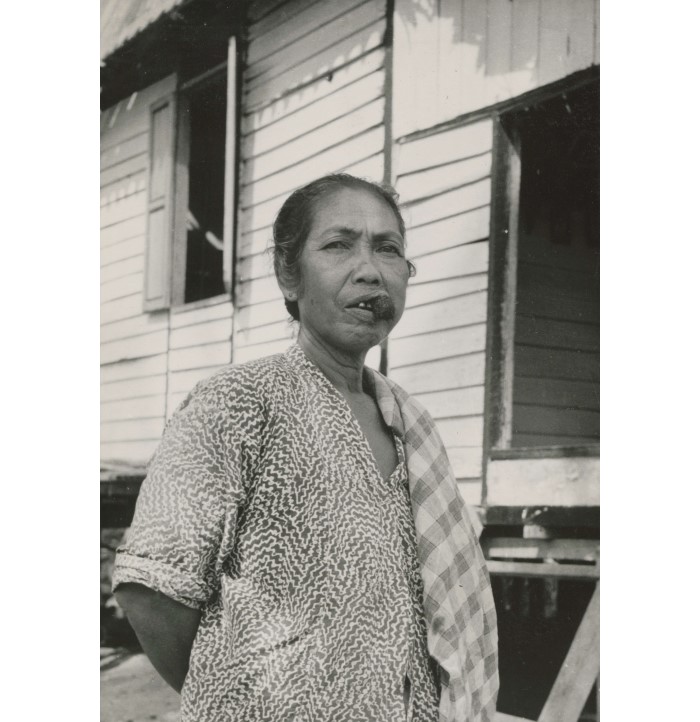
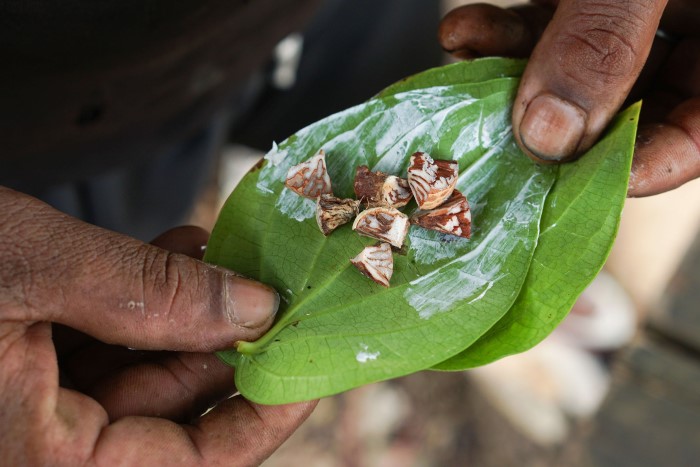
Thus in 1949, betel chewing and public spitting were still widely seen as habits that would be impossible to eradicate, as a bus passenger reportedly said:
Why don’t you know? The Government has passed a new law forbidding spitting. What are we supposed to do with betel spit? Swallow it. What if a fly got in your mouth? Likewise, swallow it.12
Some 70 years later, among its few surviving Singaporean practitioners, betel chewing had been relegated to the margins of respectability:
The first important thing is that, it’s very messy and untidy. Dirty, lah! Dirty and scary, so dirty… I am very careful. I cannot swallow the red thing, but I choose where I spit. I always spit in the dustbin. I cannot throw, the thing is too dirty! [Laughs].13
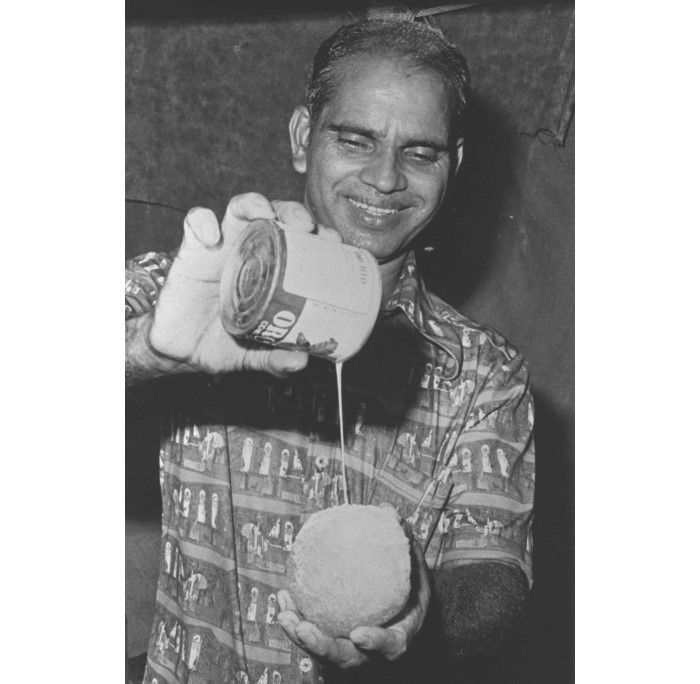
Anxieties about public order and hygiene since the 1920s also affected many other local foods, some for the better, others for worse. In Singapore, repeated outbreaks of typhoid and cholera, spurred by the sale of uncooked dishes such as iced desserts and ice balls, led to a groundswell of interest in finding ways to ‘clean up’ food businesses. Concerns fuelled attention to the steps being taken elsewhere in urban Southeast Asia to manage the sale of uncooked street food. A newspaper report decried the unsanitary practice of making ice balls:
Everybody in Singapore must have seen the man with a bucket not too clean, a few bottles of brightly coloured syrups, an inverted plane and a block of ice, with which he makes a handful of ice scrapings, moulds it with his hands into a ball, pours a spoonful of sweet water over it, and hands it to the expectant youngster, doubtless to the greater satisfaction of the mouth of the consumer than his stomach. Dirty, incredibly dirty, no doubt, to the minds of Europeans.14
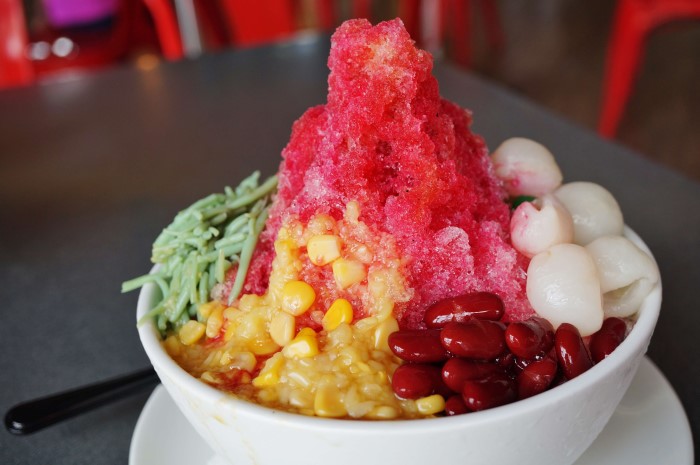
With increasing numbers of vendors using hand-cranked machines rather than bare hands to shave their ice blocks during the first half of the 20th century, ice balls began to decline in popularity, and had become largely the stuff of memories by the late 1970s.15 Ice kachang, on the other hand, which had become a mainstay of Singapore’s streets by the late 1940s, if not earlier, was nominated as a ‘national treasure’ in the mid-1980s.16
Food Standardisation and Branding
The increase of industrially manufactured ingredients and food items, the rise of ‘middling cuisines’,17 hygiene pressures, and the growth of families and family life in Singapore in the 20th century, all helped spur the expansion of a corporate-influenced local food culture. As in much of the rest of the world, processed foods for the masses were originally a middle-class novelty in Singapore. Milo, for instance, was promoted in Singapore since the 1930s as a hygienic, nourishing, sweet, delicious, well-packaged and relatively affordable food item to both European and Asian professionals. These households had both the purchasing power and kitchen facilities to make their own cups of drinking chocolate.18
By the 1950s and 1960s, however, brewing Milo with cow’s milk was fast becoming a habit for growing numbers of households trying to raise healthy children. Children who disliked the taste of milk often found it easier to consume it when it was flavoured with the sweetened chocolatey taste of Milo, Ovaltine and other instant malted powders.
With more women entering the formal workforce in the 1960s, many aspirational families also faced the paradox of growing incomes but shrinking time at home. Easy to store and prepare, Milo entrenched itself into breakfast and night-time routines for time-scarce families. As its popularity increased with successive generations, Milo became a ubiquitous product in Singapore households. An aggressively marketed brand that adapted well to local cultures, Milo took on multiple meanings associated with sports, freedom, health, modernity and even fun, ultimately paving the way for the marketing of the Milo Dinosaur—an iced variant of the Milo beverage topped with a heap of Milo powder—in the 1990s.
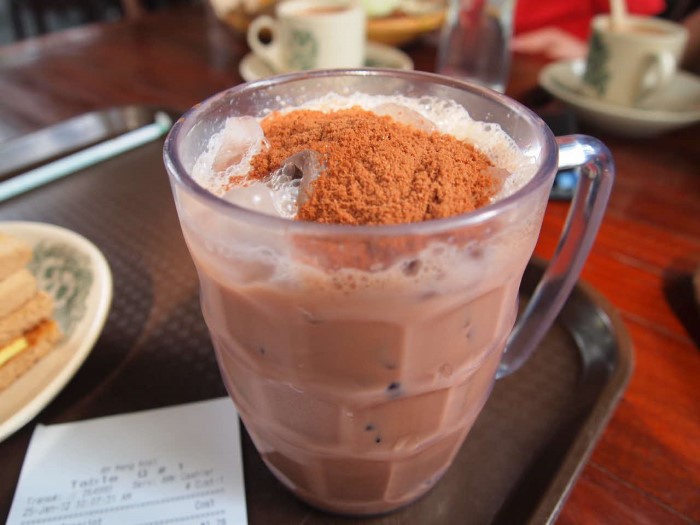
By this point, the habit of eating sweetened foods every day had become more or less normalised in Singapore’s popular food culture, even as people became increasingly aware of the health risks associated with excessive sugar consumption.19
Changing Tastes
Much of tropical Southeast Asia, as any local aficionado of kueh will confirm, is no stranger to sugar and sweetened foods. Many local fruits are sweet, sugarcane is indigenous to the region, and sugar could also be obtained from the sap of many varieties of local palms, including the nipah palm, sugar palm, palmyra palm and coconut palm. South Asia has a similarly long history of sugar cultivation, extraction and consumption.20
East Asia, however, is a different story. For most of China’s long history, for instance, the only source of local sugar came from malt syrup, extracted from sprouted and dried grains with water.21 Sugarcane was known mostly as an exotic plant from the far south, whose products were destined for the relatively few urban rich. Even at the end of the 19th century, most Chinese used very modest amounts of sugar in their cuisines.22
Many of Singapore’s food offerings with mainland Chinese origins before the 1950s did not contain much sugar or sweetness, even in desserts. However, as incomes rose, and industrially manufactured foods become more widespread and affordable, older food items began to fall by the wayside:
One [food item] that is fast losing popularity is mee teh or flour drink. It is made from flour which is first fried and then steamed. Sugar, lard, fried spring onions and sesame are added to give the drink a spicy taste. Hot water is then poured to the mixture to obtain either a paste or a liquid. Stall owner Madam Ong Bee Hoa comes from China. She claims that the recipe originated from her late husband’s forefathers who owned a confectionery shop in China. Her decrepit stall in China Street now sells assorted Chinese food. A few years ago, it was the congregating place of old-timers for a bowl of steaming mee teh.
Singapore’s own betel chewing culture was gradually impacted by sweeter versions of the concoction from South Asia, though the preference for sweetness was by no means straightforward. G.T. Lye, a long-time Chinese Peranakan theatre practitioner fond of betel chewing, said:
The Indian preparation of betel nut, I prefer [to the plain Peranakan version], because it’s sweet and has a lot of spices… I enjoy it.24
Among the younger generations who still chew betel very occasionally (or remember doing so), taste preferences may be complicated by concerns over personal health. Radhika Narayanan, for instance, prefers the sweeter North Indian version because the southern type “burns the mouth” due to the use of chunam [slaked lime]. The burning sensation was linked to her worries about tongue cancer.25
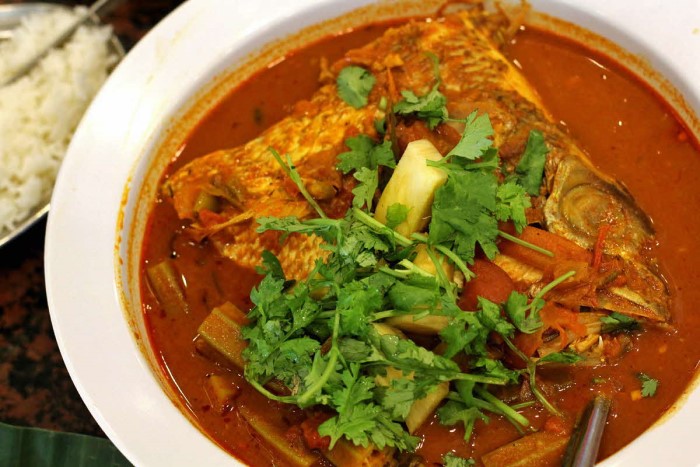
Intergenerational differences in taste preferences are generally tricky to document, and even harder to rationalise. But perhaps it is worth considering how exposure to new forms of cuisines during one’s formative years in Singapore, such as restaurant-style fish-head curry which was introduced here in the 1950s, may have the power to change and broaden palates over time. Fish heads, for instance, are not traditionally used as the main ingredient when Indians cook curry at home. Syamala Senan, a Kerala-born Indian, was described thus:
Syamala doesn’t cook fish head curry. She laughs, calling it a dish only found in Singapore. Yet after buying a big fish from the wet market, she cooks the head separately, cuts it into small pieces, adds curry, and serves it with tapioca. She says it is eaten like this across Kerala. Consumed within the kitchen only, not served to visitors. Syamala does’t like to eat fish head—she finds it very difficult. Her children are better at eating fish head.26
An Ever-evolving Food Culture
Like all cultural forms, Singapore’s 20th century food culture was not static but dynamic and constantly evolving. It was a product of technological change, social and economic forces, and government policies. The introduction and increasing accessibility of refrigeration expanded the variety of ingredients locally available, giving birth to new dishes.
Meanwhile, a growing salaried middle class faced ever-greater choices about what to eat, even as many households and cooks came under pressure to depend heavily on convenience foods. Other developments like the rise of nationalism, hygiene pressures and changing tastes also contributed to the rise and fall of various foods in popular culture. From this historical perspective, a dish deemed progressive or marginal today may, generations later, be celebrated as an iconic offering that is representative of local culture.
This article is adapted from ‘Culinary Biographies: Charting Singapore’s History through cooking and Consumption’, a project supported by the National Heritage Board Research Grant.
Notes
1 This analysis is based on the seven case studies of food items in the research project: betel quid, biryani, fish head curry, ice kachang, laksa, Milo Dinosaur and home cooking.
2 N.A. Canton, J.L. Rosedale and J. P. Morris, Chemical Analysis of the Foods of Singapore (Singapore: Government Printing Office, 1940).
3 Roy Ferroa, ‘S’pore Loves Ice’, The Singapore Free Press, 5 October 1948, 2.
4 ‘Institutions in a Native State’, The Singapore Free Press and Mercantile Advertiser, 5 March 1895, 3.
5 Geoffrey K. Pakiam, ‘A Fresh Look at Fish Through a Brief History of Fish Head Curry’, Berita Newsletter (Winter 2019/2020), 5–10.
6 Rachel Laudan, Cuisine and Empire: Cooking in World History (Berkeley: University of California Press, 2013), 234.
7 ‘The Straits Chinese’, The Singapore Free Press and Mercantile Advertiser, 10 February 1926, 9.
8 ‘Chinese Mems’ New Enterprise’, Sunday Tribune, 5 February 1939, 10.
9 Tan Tock Saik, ‘Our Students “Read Scrooge” to a Deaf Briton’, The Straits Times, 16 December 1951, 12.
10 ‘Best Malayan Food “Is Sold Only in Penang”’, The Singapore Free Press, 27 June 1953, 3.
11 Margaret Chan, ‘Melts in the Mouth, Slides Down the Throat’, New Nation, 21 September 1979, 10–11.
12 ‘Dryden’, ‘Spitting Is a Terrible Crime’, The Singapore Free Press, 4 July 1949, 2.
13 Interview with G.T. Lye, 13 June 2020.
14 ‘Feeding the Poor’, The Singapore Free Press and Mercantile Advertiser, 17 May 1924, 8.
15 Liew Soon Chin, ‘Falling Out of Flavour’, New Nation, 8 June 1978, 10–11.
16 Ivan Fernandez, ‘Top of Your List’, The Straits Times, 9 August 1985, 4.
17 Middling cuisines bridged high and humble cuisines, following the rise of modern nation-states, industrialisation and rapid urbanisation. High cuisines were enjoyed by the elite of society, while humble cuisine comprised dishes of the rural and urban poor. See Laudan, 2013, 37–41, 208–209.
18 Sucheta Mazumdar, Sugar and Society in China: Peasants, Technology, and the World Market (Cambridge, MA: Harvard Asia Center, 1998); Laudan, 2013.
19 Geoffrey K. Pakiam, Gayathrii Nathan and Toffa Abdul Wahed, ‘Milo Dinosaur: When Southeast Asia’s Cultural Heritage Meets Nestlé,’ ISEAS Perspective, no. 89, 24 October 2019.
20 Laudan, 2013; Ulbe Bosma, The Asian Sugar Plantation in India and Indonesia: Industrial Production, 1770–2010 (New York: Cambridge University Press, 2013).
21 Laudan, 2013, 19, 34.
22 Mazumdar, 1998.
23 Liew, 8 Jun 1978, 10–11.
24 Interview with G.T. Lye, 13 June 2020.
25 Notes from interview with Radhika Narayanan, 7 October 2019.
26 Notes from interview with Syamala Senan, 25 September 2019.




